Fans of Ruger’s iconic 10/22 rifle enjoy October 22nd as a holiday to celebrate their rifles. Really though, the whole month is something of a build-up for devotees. On some of the enthusiast sites I visit, this month has already seen more activity related to the Ruger 10/22. So I felt it appropriate to dig something out of my safe and share another installment of this series. Today’s article is going to highlight what I consider to be my field rifle, but also a favorite suppressor host. Most of my rifles are in a constant state of flux, with parts and accessories added or changed over time. That’s just part and parcel of being a consummate tinkerer. What makes this rifle different is that it’s pretty much “done”. There are no further changes planned for it. And although it’s a Ruger, it’s technically not a 10/22*.
As I built and upgraded different rifles over the last few years, I found certain parts that performed very well in relation to their cost. And I usually ended up with multiples of them. As I swapped parts around, this pile of great parts started growing. Eventually, I realized that I had everything to make another rifle, but not something “exciting”. No fancy stock or chassis, carbon fiber barrel, or match trigger that cost hundreds of dollars. What I ended up with is a rifle with great performance, at a reasonable cost. Each part is probably the best value for your dollar. If someone is looking to build the best rifle they can on a budget, this is the exact rifle I would recommend. Here it is, broken down by parts, along with the reason why I used each of them.
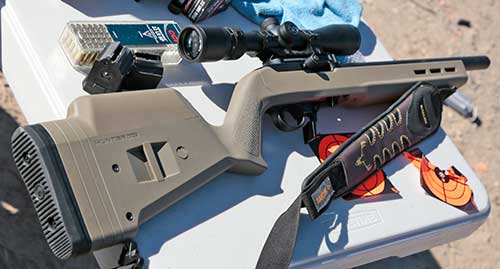
The genuine OEM Ruger receiver
Starting with a Ruger receiver makes sense for many reasons. Availability is at the top of that list. New and used rifles can be found fairly easily, and it’s always less expensive to start with a complete one than piece one together. Where an aftermarket receiver might cost $150-$200 after taxes, shipping, and transfer, I’ve bought complete used rifles for $200. And if you don’t have the cash to buy everything else all at once, you’ve still got a complete rifle to shoot. As parts like barrels and stocks are replaced, you can usually sell off the originals, and get a few bucks back, while helping someone else with their build. An added benefit often overlooked is that there are some accessories designed specifically for the OEM receiver profile, as you’ll see below. My preference is for older receivers, but any one will do.
*This rifle is actually built on the Ruger 22 Charger pistol receiver. Dimensionally identical to the Ruger 10/22 rifle receiver, it provides one distinct advantage. If I decided I’d rather have a pistol, I can remove it from the stock, and legally install a barrel under 16″ again, as that’s what it left the factory with.
Magpul Hunter X-22 stock
It’s funny that I don’t really consider myself a Magpul fan. Then I add up how many of their stocks I’ve bought. Across different rimfire and centerfire platforms, it’s probably a dozen or more. So there must be something there. When it comes to their stock for the 10/22, it’s hard to beat. Not calling it the best, because it’s not. It’s just a great value with lots of flexibility and the ability to suit many roles. First, it works with the standard taper OEM barrel, and larger .920″ barrels by just flipping the barrel tray over. So you can buy it before you do your barrel upgrade, and it will work with your new barrel later. Most stocks make you choose which barrel profile you’ll use.
Being made from polymer, the Magpul Hunter X-22 has a great strength-to-weight ratio. Rigid enough for light duty bench shooting, light enough for field work. Multiple cheek riser options allow for irons, reflex sights, or large scopes. Stack some spacers at the rear to get a perfect length of pull. M-LOK slots at 3, 6, and 9 o’clock on the forend offer plenty of mounting options. Bipods, lights, lasers, hand stops, foregrips, and sling mounts are all available. I like the grip, so it’s got good ergonomics for me. And if it matters to you, Magpul offers it in FDE, black, grey, and pink. MSRP is $139.95, but the Magpul site frequently offers discounts of some sort. And I wouldn’t turn down a used one, as they’re nearly indestructible.
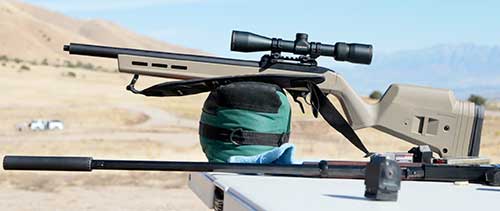
Acculite threaded .920″ barrel
Now that this Ruger 10/22 is in its new stock, a barrel upgrade is in order. My first, second, and third Acculite barrels were purchased back when they were still WhistlePigGunBarrelCo. That’s a long name, and the rebranding certainly reflects the barrels. They are both accurate and light. On my rifle barrels, I skipped the fluting, as they seem to attract scratches easier. And any extra weight savings or heat dissipation is not worth the extra cost to me. Having a barrel that’s threaded is a must though. And the Acculites come threaded, with a thread protector that’s so cleanly and seamlessly incorporated into the barrel, it’s almost not even noticeable. At about an ounce per inch, they’re light enough for carrying all day, yet very accurate off the bench too. Currently, they start at $187 for the 16.5″ model, with free shipping.
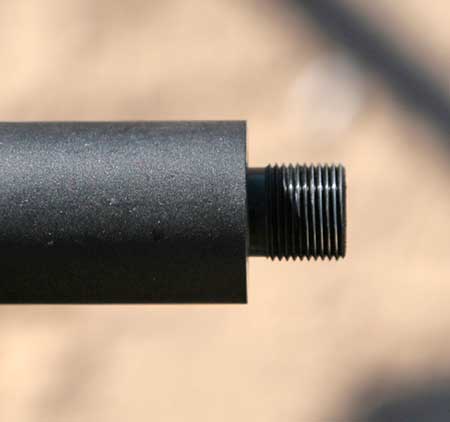
Aftermarket bolt
This is one of those parts where it’s not 100% necessary, but somewhat easily justified. Most Ruger 10/22 OEM bolts will make your rifle go bang every time. For reliability, it’s not a bad idea to upgrade the firing pin and extractor. At around $40+ for the pair, a $99 aftermarket bolt, with all the upgrades, made more sense. I used my dealer account to purchase this Pike Arms bolt from Tactical Innovations, back when I was building a lot of custom rifles. But the $99 aftermarket bolt no longer exists, they are all over $100 now. For that, you do get a lot though.
Aftermarket bolts are billet machined, rather than cast, for more precise tolerances. Headspace is correct, which is one of the keys to consistency. Firing pins are designed for more reliable ignition. They also have a cross pin above them, to avoid any “bounce”. Ruger’s stamped extractor is replaced with a wire EDM cut one that is sharper and more aggressive in extraction, for even more reliability. While it may help with accuracy and consistency, it will definitely improve reliability.
Trigger upgrade
It’s easy enough to buy a complete Ruger BX trigger, and not have to mess with taking apart the trigger group. For anyone comfortable with replacing a few internal parts, I don’t recommend it. They were a good value at $50 or so. Ruger now lists them at $96.95 on their site, and I have seen them as low as $70+ shipping elsewhere. If you get a screaming deal on a new or used one, great. But spending a little more gets you a lot more trigger. My two choices used to be the TandemKross Ultimate Trigger Kit, and the KIDD “Trigger job”. KIDD had a slight edge when you could get two or more for $105 each. Now the KIDD is $127, while the TandemKross is $134.99. For the price difference, I prefer the latter, as the extra spring which virtually eliminates pre-travel makes it a really nice option.
Both require replacing the hammer and sear, and some various springs and other parts. Either one is a solid performance upgrade, with a lighter, smoother pull and a crisp break. Each includes a replacement trigger blade with an overtravel stop screw too. For the rifle pictured, I’ve got the KIDD installed. But if I was buying a trigger upgrade today, I’d get another TandemKross instead.
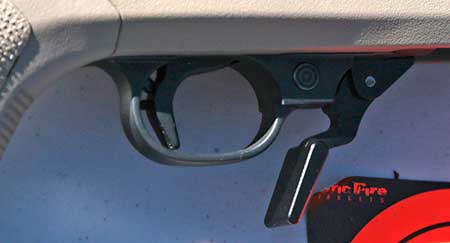
Aftermarket Charging handle
Like the aftermarket bolt, this isn’t a required upgrade. If your current charging handle works for you, and your Ruger 10/22 cycles all ammo, then it’s low on the priority list. Some shooters do prefer a larger handle, or a different profile, and those are certainly valid reasons to upgrade. For me, I had a very specific need. Shooting with a suppressor and lower velocity ammo can sometimes result in cycling issues. Although I don’t recall what I paid for my KIDD charging handle assembly, I’m sure it wasn’t the current $50 MSRP. But it came with three springs, so I could tune my rifle for a little extra reliability with the ammo that I am most likely to use in it. If you’re not running a suppressor, this is very optional.
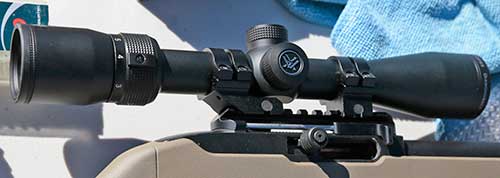
TandemKross Advantage left side charging handle and Picatinny rail
Easily the best accessory that I never knew I needed until I had one. This is also one of the most compelling reasons to stick with the Ruger 10/22 receiver. A quality Picatinny rail can be had for around $30. At $69.99, the TandemKross Advantage is more than twice that. Yet its left-side charging handle makes it easily worth the extra expense. Whether competing, hunting, or just plinking for fun, having a second charging handle is indeed an advantage.
For me, this is the perfect complement to the tunable charging handle assembly and my suppressor. In the rare instance where a round fails to fire or extract, I don’t even need to break my hold to resolve it. My support hand is already just in front of the secondary handle, enabling me to quickly clear the rifle and chamber another round. By design, the Advantage never interferes with the right side handle either. It’s just a very clever arrangement that’s there when you need it, and unobtrusive the rest of the time.
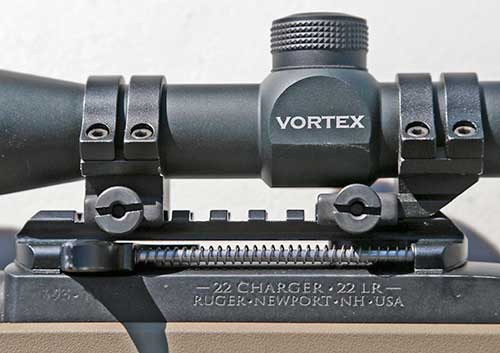
Aftermarket magazine release
There are many options available for aftermarket magazine releases, but they mostly fall into two classes. First, the shorter ones that hang down in front of the trigger guard, similar to the current OEM design. There are also longer ones, that run under the trigger guard. Both offer advantages and disadvantages. While the longer ones are lower profile, and less likely to get bumped, I never really liked them. At the same time, I never accidentally dropped a magazine with the shorter ones, so they are my preference.
Shown on this rifle is the latest release of the TandemKross Fireswitch. While I haven’t completed my full review of it yet, I was a fan from the moment I installed it. Separating it from just about every other release on the market is its unique function. Whereas most require a push to compress the magazine release spring and allow the magazine to drop free, the Fireswitch works whether pushed or pulled. And I’ve found that I can easily actuate it using my trigger finger or middle finger. It’s another one of those “not necessary” but still worth the $49.99 upgrades.
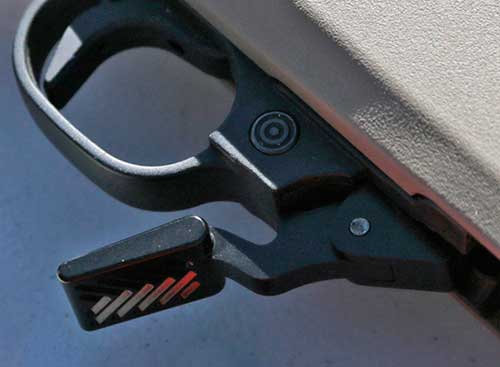
Vortex Diamondback 2-7×35 Rimfire scope
Originally, this rifle had the Vortex Crossfire II 2-7×32 Rimfire scope, which was a plenty capable scope for a very reasonable price. Carrying a $179 MSRP, I usually see them around $130 or so. If your budget is tight, that’s a solid value. But I wanted the slightly larger objective, better glass, and more robust construction of the Vortex Diamondback 2-7×35 Rimfire scope. Although its MSRP is $329.99, the actual selling price is usually around $240. To me, it’s worth nearly double the Crossfire II, but not totally necessary. And while I do own other brands of optics, it’s the Vortex no-questions-asked VIP warranty that keeps me loyal. I’ve had a few mishaps with my optics, which Vortex quickly replaced. Note that you should only buy them from a reputable, authorized dealer, as there are fake Vortex optics out there.
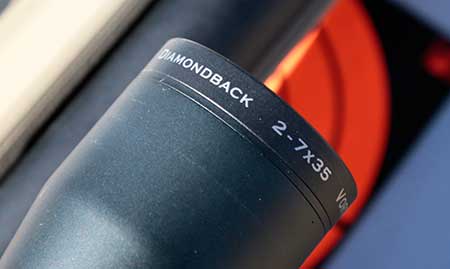
Small internal upgrades every Ruger 10/22 should have
In order to keep production costs down, and keep their lawyers happy, rifles are delivered with a few shortcomings. Ruger hasn’t changed the design of their internal parts much, even as they switched from aluminum to polymer trigger housings. They still have the bolt lock that requires three hands to release. In my opinion, this can actually be somewhat dangerous for beginners, as they are difficult to manipulate without practice. So get an aftermarket bolt release from a reputable vendor.
While you’re ordering that release, grab a replacement bolt buffer to replace the steel pin. There have been endless debates about whether or not they are needed, or even make a difference. But if you have a suppressor, you’ll want a polymer buffer, rather than a steel stop. It’s quieter. The main reason that I suggest getting them from TandemKross is that I also recommend their KrossPins. If your receiver pins are too tight or loose, they will save you some headaches. KrossPins use a ball detent to stay in place, so they don’t fall out, but are easily pushed out.
Finally, a sling
Slings are a personal choice, so I’m not going to suggest any specific one, only share what I have, and why. It’s an Allen BakTrak that I got in trade, and it’s attached to some sling studs I installed in the Magpul stock. Even though my rifle isn’t that heavy, I appreciate the wide, padded shoulder strap. It distributes the weight very well and has rubber grippers to keep it in place on my shoulder. Where the padding meets the webbing, it’s got a little thumb loop, which is a nice touch, and adds some comfort and security when carrying my rifle.

The sum of the parts
Well, I did some quick math in my head, and all the upgrades on top of even a used rifle, still come in at over $1,000 for the complete rifle at full retail. But as I mentioned, not everything listed is really a necessity. And this is a rifle that can be assembled over time, as budget allows. More importantly, items like the stock and scope can be found used for less than retail. With some patience and careful shopping, I’m sure it can be done for quite a bit less. The end result is a light rifle that’s handy in the field and great as a suppressor host. It would be ideal for hunting small game, and more than accurate enough for that. Recently, I mentioned to a friend that out of all the Ruger 10/22 rifles I have, if I could only have one, this would be it.
What are your thoughts? Do you have a similar build, or experience with any of the parts listed? Questions about them? Leave a comment below, and I’ll be sure to reply.
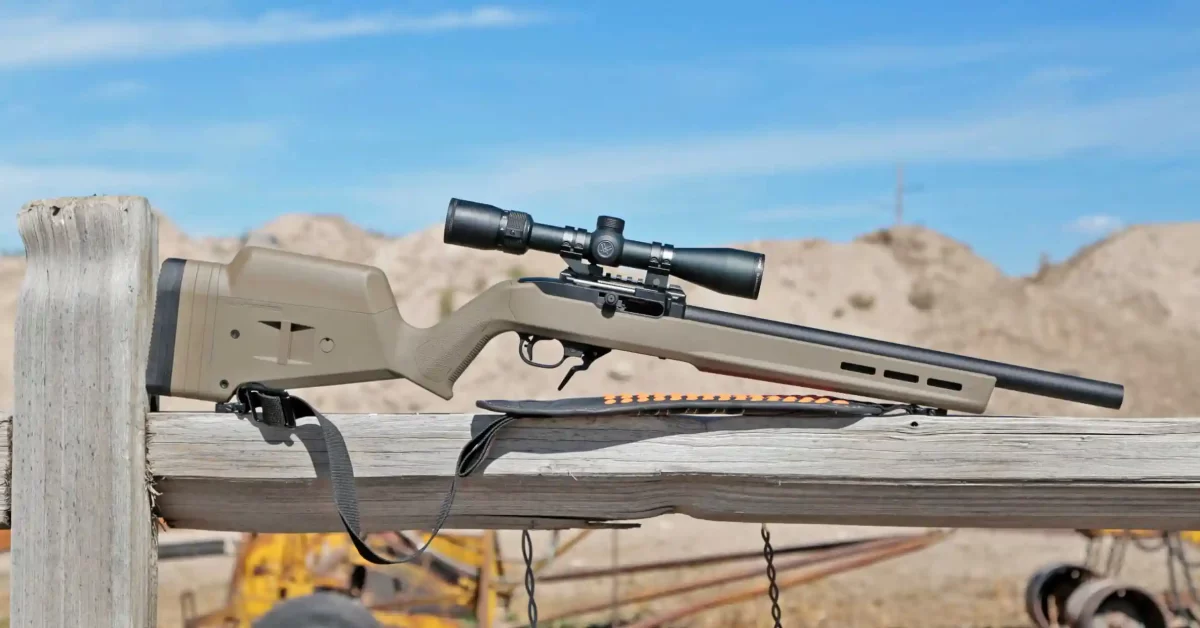
what scope ring is that?
That’s “What they had in stock during Covid lockdowns”.